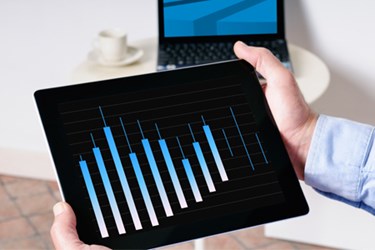Data Normalization: A New Source Of Value For Your Healthcare IT Clients
By Megan Williams, contributing writer

As much as the talk of health information exchanges and predictive analytics in healthcare grows, it’s impossible to ignore the fact that some basic standards around data can’t be overlooked if these goals are to be achieved.
One of the biggest is data normalization.
Frequently dismissed as the domain of academics, data normalization can actually be quite practical, and brings with it the benefit of faster query building and reduced latency of queries to the database.
A Piece Of The Interoperability Puzzle
US News recently reported on the challenges around achieving interoperability, and how meeting the goal is more difficult than once thought.
Interoperability, a cornerstone of Meaningful Use Stage 2 (make sure you’re talking to your clients properly about it), has proven to be a challenge for many providers who still haven’t found the path to an interoperable network of EHRs. Last week, the U.S. News Hospital Of Tomorrow Conference in Washington discussed some of the challenges of interoperability in a complex industry like healthcare.
Micky Tripathy, founding president and CEO of the Massachusetts eHealth Collaborative, stressed that the idea of a “pristine” vision of the HIE value chain was “getting blown to bits.” He also emphasized the importance of viewing data normalization (along with direct messaging, and point-to-point query) as a separate value chain, as the future of how interoperability should be viewed.
According to Search Health IT, normalization is also an integral part of proper reporting functions, something highly important to CIOs.
The Importance In Mobile
As health data comes from an increasingly varied range of sources, normalization will become a highlight unto itself.
Vivametrica, according to VentureBeat, has released an aggregation platform exclusively for fitness trackers. While still a good distance from the clinical side, mobile apps are far from unimportant to your clients (who stand to see a positive ROI from making better use of mobile technology).
According to their interview with Vivametrica, founder Dr. Richard Hu says, “The challenge bedeviling non-medical-grade health devices, of course, has always been whether doctors can trust the inputs. I know from personal experience that FitBit, BodyMedia, Up, and the Misfit Shine can differ significantly in terms of how many steps they think I’ve taken, for instance, and how hard I’ve worked out.
“But Vivametrica has a plan for this: data normalization painstakingly developed via testing all the most popular devices, and cross-referencing them to the gold standard in the medical industry for activity tracking, the ActiveGraph. The ActiveGraph has been used in scientific studies, has very defined and calibrated accuracy, and has very structured software.”
To read more about taking a higher level approach to data and its impact on healthcare organizations, read this article on data governance.
